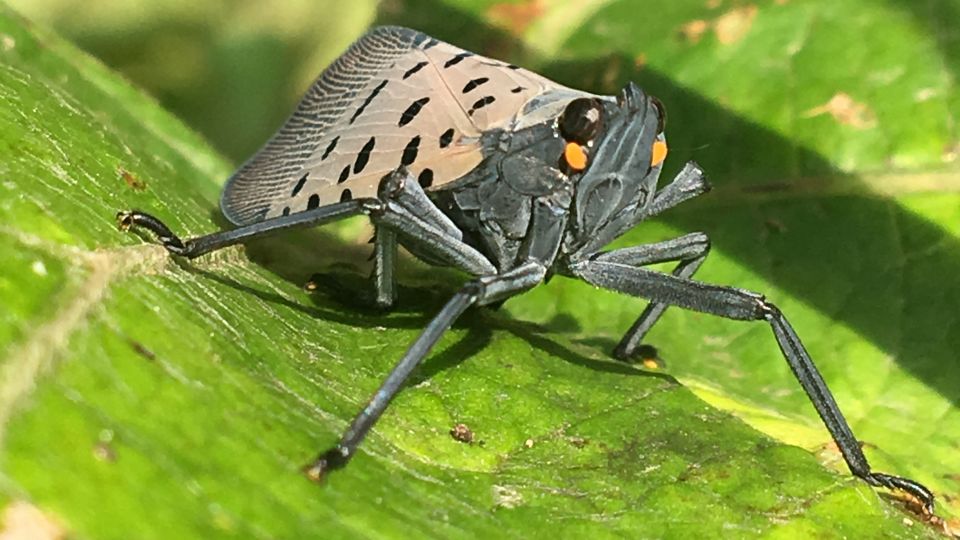Invasive Spotted Lanternfly Found in Ohio

An up-close look at the spotted lanternfly. The pest continues to spread west of the Mid-Atlantic. (Photo: Delaware Department of Agriculture)
Add Ohio to the list of U.S. states that have confirmed the presence of the invasive Spotted Lanternfly (SLF).
Inspectors from the Ohio Department of Agriculture (ODA) Plant Pest Control captured five live adults among trees in Mingo Junction, which is south of Steubenville, along the Ohio River.
The inspectors had been responding to an initial report from a resident who on Oct. 19 spotted a dead adult on a commercial building.
ODA has been working with USDA, the Ohio Department of Natural Resources, Ohio State University Extension, and the Ohio Grape Industries Committee to do visual surveys, insect trapping, and outreach in the region.
Ohio is the 11th eastern state in which SLF has been detected, joining Connecticut, Delaware, Massachusetts, Maryland, North Carolina, New Jersey, New York, Pennsylvania, Virginia, and West Virginia.
SLF was first found in North America (Pennsylvania) in 2014. It is believed to have arrived on shipments of stone from China.
On Oct. 8, in Oregon, a dead SLF was found in a shipment of planters and ceramic pots that had been sent to the state from Pennsylvania. California has also found dead specimens in shipments.
The SLF poses a threat to tree fruit and grape production. The insect is fond of grapevines, fruit trees, hops, blueberry, oak, pine, poplar, and walnut. Adult SLF are attracted to the invasive Ailanthus tree, also known as tree-of-heaven, while nymphs feed on a wide range of hosts. Both adults and nymphs feed on stems and leaves, causing sap bleeding and reduced photosynthesis, which can eventually kill the plant.
Now through November is the best time to spot the SLF because it is in its most recognizable stages as a colorful winged adult plant hopper. After hatching in the late spring, the SLF goes through four nymph stages. By midsummer, the nymph SLF can be identified by its red body, roughly a half-inch in size, with black stripes and white dots. During the late summer until roughly November, the SLF is in the adult stage. These adults are larger, roughly one inch in size, with black bodies and brightly colored wings.
The public is the first line of defense against the SLF. If you believe you have seen an SLF in your area, you can easily report a suspected infestation by going to ODA’s Spotted Lanternfly Information Page and filling out a suspected infestation report. You may also call the Plant Pest Control Division at 614-728-6400.










